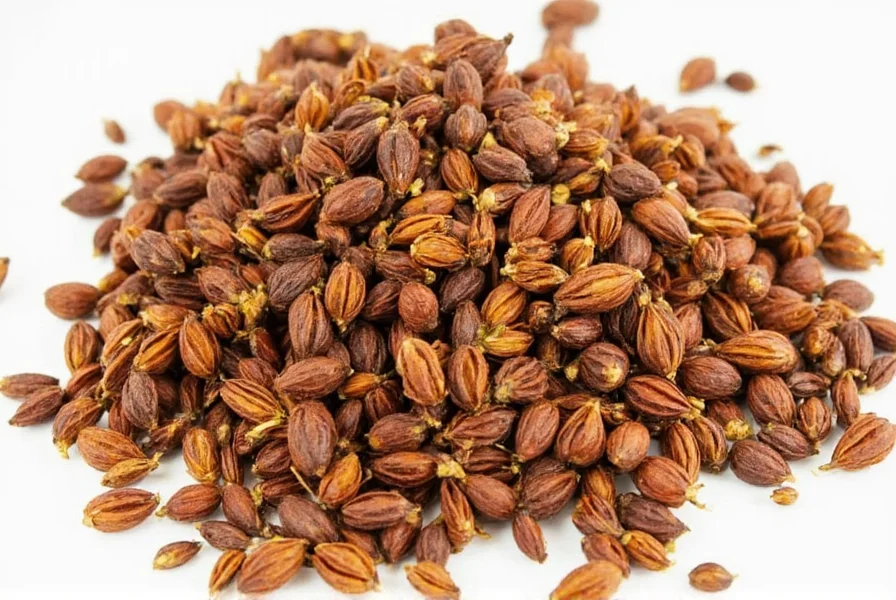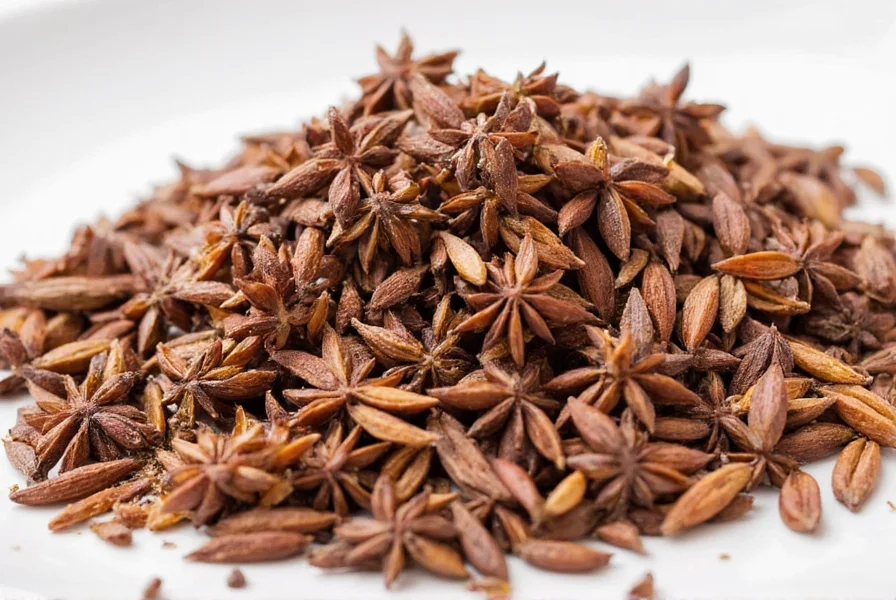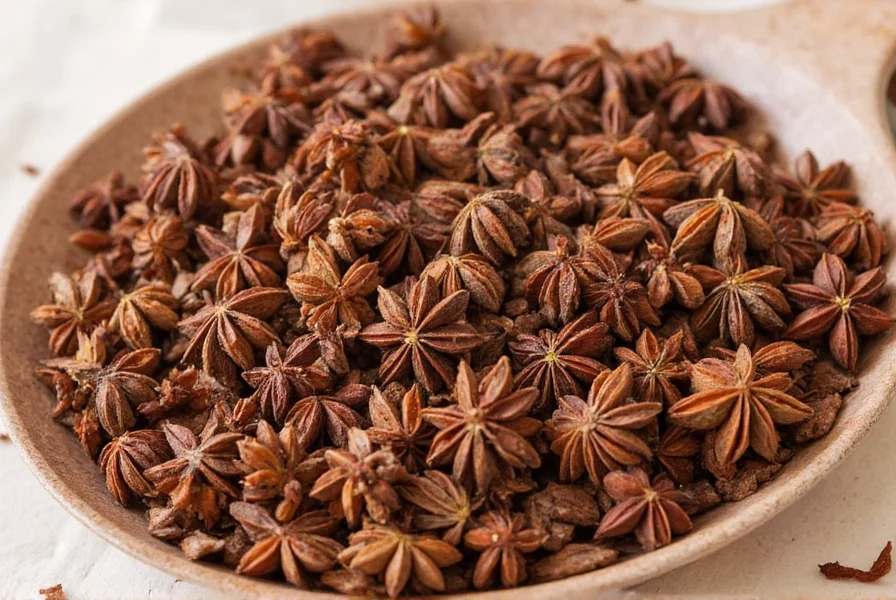Star anise, with its distinctive licorice-like flavor, is a staple in many Asian cuisines and holiday recipes. When you find yourself without this unique spice, knowing effective substitutes becomes essential for maintaining your dish's intended flavor profile. Whether you're preparing Vietnamese pho, Chinese braised meats, or holiday baked goods, these alternatives ensure your cooking remains on track.
Understanding Star Anise and Substitution Needs
Native to Southwest China and Northeast Vietnam, star anise (Illicium verum) delivers a potent anethole compound that creates its signature sweet-licorice taste. This distinctive flavor makes finding suitable replacements challenging but not impossible. Home cooks typically seek alternatives for three main reasons: unavailable ingredients, flavor preference adjustments, or dietary restrictions.
Top Star Anise Substitutes Ranked by Effectiveness

Chinese Five-Spice Powder: The Closest Flavor Match
When searching for star anise substitute for pho or other Asian dishes, Chinese five-spice powder stands as the premier alternative. This blend typically contains star anise as its primary component along with cloves, Chinese cinnamon, Sichuan pepper, and fennel seeds.
Usage ratio: Replace one whole star anise with 1.5 teaspoons of five-spice powder. For recipes calling for ground star anise, use a 1:1 ratio with five-spice powder.
Five-spice powder works particularly well in star anise alternative for braised dishes where the complex flavor profile enhances meats and sauces. Remember that this substitute adds additional flavors beyond just star anise, creating a more complex taste profile.
Anise Seeds: The Direct Flavor Equivalent
Anise seeds (Pimpinella anisum) share the same primary compound (anethole) as star anise, making them chemically similar though slightly sweeter and less complex.
Usage ratio: Substitute 1 teaspoon of ground anise seed for each whole star anise. For whole star anise replacement, use 1.5 teaspoons of whole anise seeds.
This alternative shines in baking recipes requiring star anise substitute like biscotti, gingerbread, and fruit compotes. The flavor profile works especially well in sweet applications where the pure anise flavor can shine without competing savory elements.
Fennel Seeds: The Milder Option
Fennel seeds offer a more subtle anise flavor with additional herbal notes. They work best when you need a milder star anise alternative for delicate dishes.
Usage ratio: Use 1.5 teaspoons of crushed fennel seeds per whole star anise. For ground applications, use a 1:1 ratio with ground fennel.
Chefs often reach for fennel seeds when creating star anise substitute for seafood dishes or light broths where an overpowering licorice flavor would dominate. The citrus undertones in fennel complement fish and vegetable preparations beautifully.
Licorice Root: The Authentic Alternative
True licorice root (not candy) provides the most authentic licorice flavor but requires careful handling due to its potency.
Usage ratio: Use 1 teaspoon of grated licorice root per whole star anise. For tea applications, steep 1/2 teaspoon per cup.
This substitute works exceptionally well for homemade star anise tea alternative and medicinal preparations. Note that licorice root contains glycyrrhizin, which can affect blood pressure in large quantities, making it unsuitable for regular consumption by some individuals.
| Alternative | Flavor Profile | Substitution Ratio | Best Applications |
|---|---|---|---|
| Chinese Five-Spice Powder | Complex, warm, slightly sweet | 1.5 tsp per star | Pho, braised meats, marinades |
| Anise Seeds | Sweet licorice, pure anise | 1 tsp ground per star | Baking, mulled wine, fruit preserves |
| Fennel Seeds | Mild licorice, herbal notes | 1.5 tsp crushed per star | Seafood, light broths, vegetable dishes |
| Licorice Root | Strong licorice, earthy | 1 tsp grated per star | Teas, medicinal preparations |
| Cinnamon + Cloves | Warm, sweet, spicy | 1/2 tsp cinnamon + 1/4 tsp cloves | Curries, stews, holiday baking |
Creative Combinations for Specific Applications
For Vietnamese Pho Broth
When making star anise substitute for pho, combine equal parts cinnamon and cloves (1/2 teaspoon cinnamon plus 1/4 teaspoon cloves per star anise). This pairing mimics star anise's warmth without the licorice intensity. Add a pinch of fennel seeds for closer approximation. Remember that pho relies on multiple spices working in harmony, so adjusting other elements like ginger and coriander may be necessary when changing the star anise component.
For Holiday Baking and Mulled Wine
In star anise alternative for mulled wine, anise seeds provide the closest flavor match. Use 1 teaspoon of crushed anise seeds per cup of wine. For baked goods, try a combination of fennel seeds and a tiny pinch of almond extract (1/8 teaspoon per recipe) to mimic star anise's complex profile without overwhelming sweetness.
For Chinese Five-Spice Powder Replacement
If your recipe calls for five-spice powder but you need a star anise substitute in five spice powder, create your own blend using: 2 parts Szechuan peppercorns, 2 parts fennel seeds, 1 part cloves, 1 part cinnamon, and 1 part star anise substitute (anise seeds or fennel seeds). Toast the whole spices before grinding for optimal flavor release.
Common Substitution Mistakes to Avoid
Many home cooks make critical errors when substituting star anise. The most frequent mistake involves using too much alternative spice, resulting in overpowering flavors. Remember that star anise is potent but balanced in its natural form. Another common error is substituting anise extract directly without adjusting liquid content in recipes. When using liquid alternatives, reduce other liquids by 1-2 teaspoons per teaspoon of extract used.
For those exploring star anise alternative for beginners, start with half the recommended substitution amount, taste your dish, then gradually add more until you achieve the desired flavor profile. This approach prevents irreversible over-seasoning, especially important in slow-cooked dishes where flavors intensify over time.

Storage Tips for Alternative Spices
Proper storage maintains the potency of your star anise alternatives. Keep whole spices in airtight containers away from light and heat. Ground spices lose potency faster—use within 6 months for best results. Anise seeds and fennel seeds retain flavor longest when stored in the freezer. For homemade blends like homemade five spice powder recipe as star anise substitute, store in small batches to ensure freshness.











 浙公网安备
33010002000092号
浙公网安备
33010002000092号 浙B2-20120091-4
浙B2-20120091-4